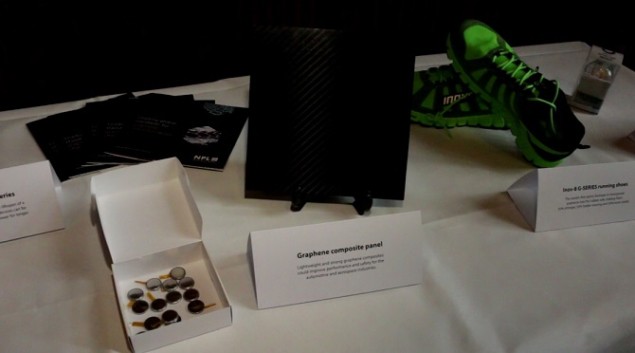Business thrives on healthy competition, so when different suppliers offer apparently similar but incommensurable products it is not hard to imagine this having a negative impact on companies trying to work with the products and the industry as a whole. Such has been the case for graphene, until now. On Monday afternoon 16th July 2018, representatives from academia, industry and business gathered at the House of Commons in Westminster in the UK for the launch of the world’s first graphene characterization service, an initiative led by the National Physical Laboratory (NPL) in Teddington and the National Graphene Institute (NGI) at the University of Manchester in the UK.
“This service will provide the missing link between academia and industry and will revolutionize how graphene is commercialized in years to come,” Graham Stuart, Minister for Investment told attendees, many of whom have had firsthand experience of the difficulties the lack of standardization in the industry causes and can see the service making a major step to commercially exploiting a material with properties so extraordinary, as Stuart put it “it sounds like something out of a Marvel comic”.
Reliably reproducing wonder properties
In fact as Ray Gibbs, CEO of Haydale pointed out, since 2010 when the Nobel Prize was awarded for the discovery of graphene, industry started to evolve its own standards and definitions because there weren’t any. Set up in 2010 Haydale functionalizes commercial graphene for different dispersions and formats to serve a range of applications.

Graphene meets the standard for industry
“We were shocked by the number of measurements that were variable and different because people were using very expensive equipment,” said Gibbs, as he explained that often the problem lay in lack of training for the people using the equipment. “Repeatability is crucial – if you can’t repeat it again no-one will make big ticket investment.”
Filling this gap, both NPL and the NGI share a wealth of expertise in the techniques needed to provide a reliable characterization and measurement service, an idea that has been five years in the making. NPL, a global pioneer in measurement technology will be able to offer robust measurements of the properties of commercially supplied graphene while the NGI can draw on their specialist research excellence in graphene to comment on how the measured properties match up for specific applications.
“The key thing is if you want to purchase a material you look at the data sheet and see what you want but for graphene the data sheets are all different so if you want to compare different suppliers you can’t,” Martin Kemp, consultant for graphene producer Versarien plc told Physics World. “So we’re saying we don’t care what you call your black powder for instance – just tell us what’s in it.” Kemp has also worked with the British Standards Institute on the British standardization of graphene to be launched next month, a brief 20 page document by and for industry that follows the more detailed International Standardization of graphene released in the autumn of 2017.

Hitting the market
Graphene has been used in commercial items before now but for a long time its inclusion has been more of a marketing exercise to attract attention rather than making use of its manifold fascinating properties. This is now starting to change making the service launch particularly timely. Examples of products on display at the launch that are making genuine use of graphene’s properties included trainers using graphene for mechanical and thermal management enhancement to improve their durability, as well as a lightbulb with a filament coated in graphene, again exploiting the material’s thermal conduction properties to give the filament greater efficiency and longevity.
Will it end with graphene? Quite likely no, as James Baker – CEO of Graphene@Manchester at the University of Manchester, which includes the NGI and the new Graphene Engineering and Innovation Centre (GEIC) – points out, “We Launched the service for graphene but graphene is shorthand not just for graphene but a whole load of other materials.”



